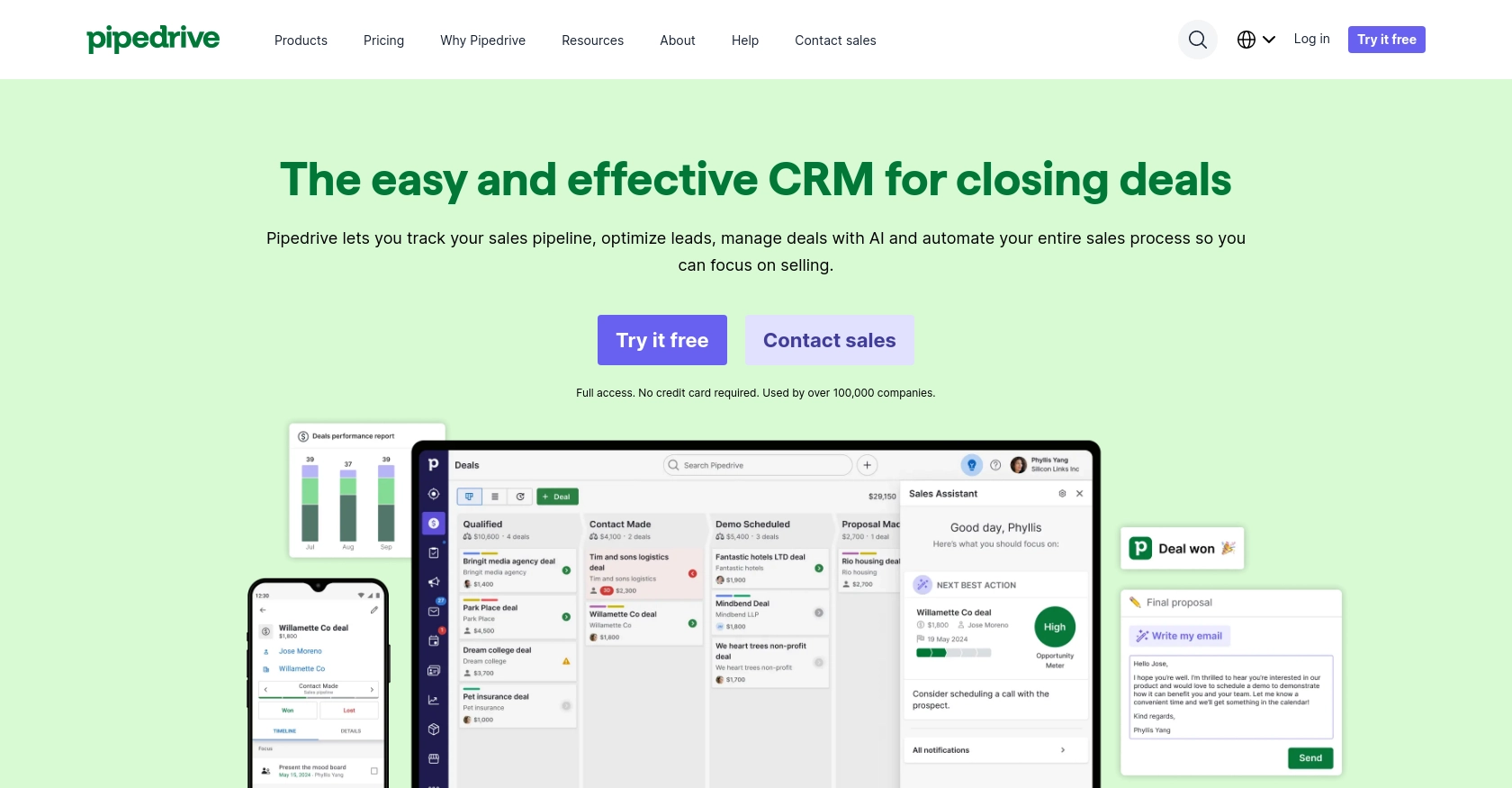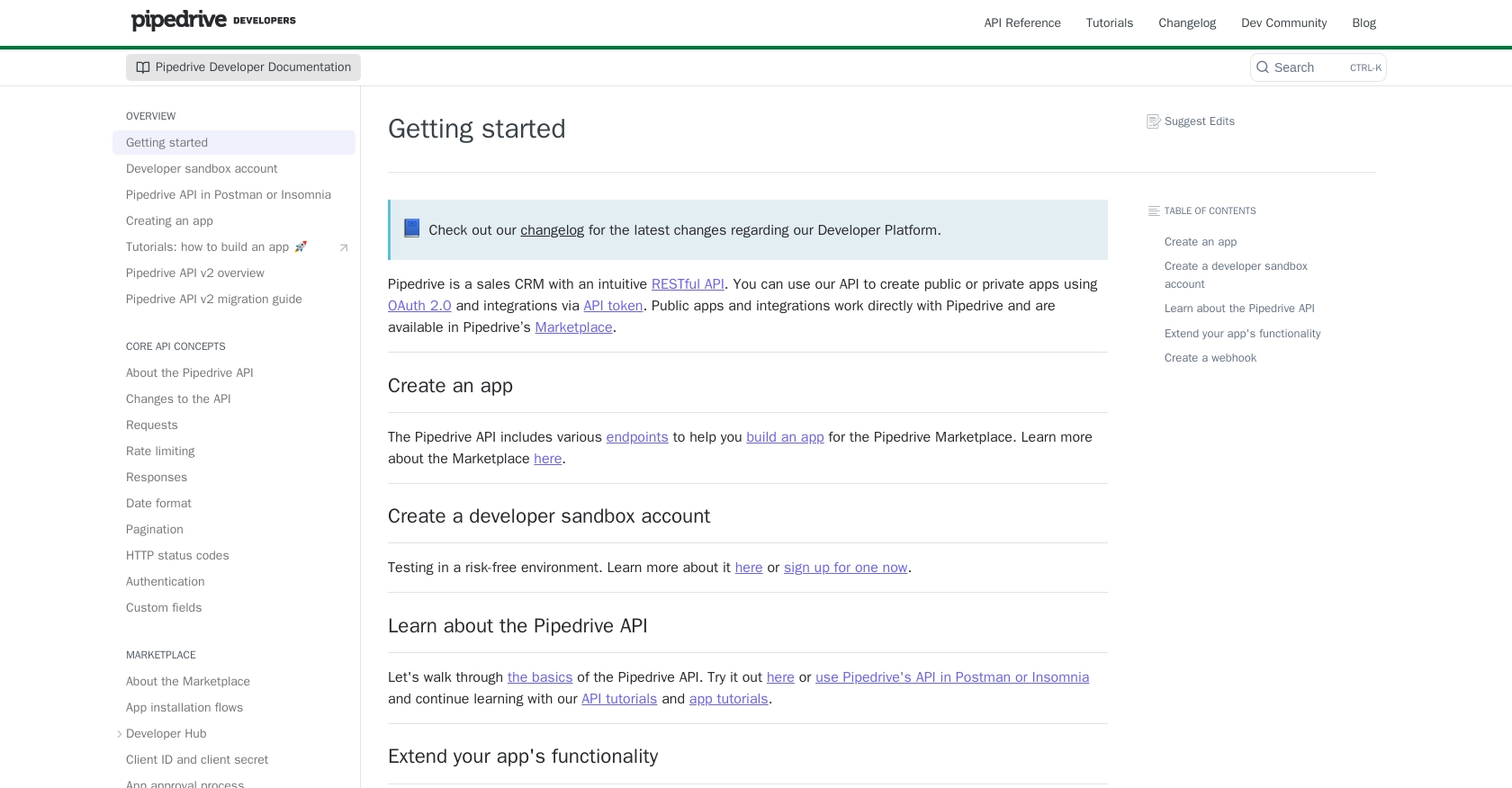How to Get Users with the Pipedrive API in Python

Introduction to Pipedrive API Integration
Pipedrive is a powerful sales CRM platform that helps businesses manage their sales processes with ease. Known for its intuitive interface and robust features, Pipedrive offers tools for sales tracking, pipeline management, and reporting, making it a popular choice for sales teams worldwide.
Integrating with Pipedrive's API allows developers to access and manage user data, enhancing the functionality of their applications. For example, a developer might want to retrieve user information to synchronize team data across multiple platforms, ensuring that all team members have access to the latest updates and insights.
Setting Up Your Pipedrive Developer Sandbox Account
Before you can start interacting with the Pipedrive API, you'll need to set up a developer sandbox account. This environment allows you to test and develop your integration in a risk-free setting, ensuring that your application functions correctly before going live.
Creating a Pipedrive Developer Sandbox Account
To get started, you'll need to create a developer sandbox account with Pipedrive. This account mimics a regular Pipedrive company account but is specifically designed for development and testing purposes.
- Visit the Pipedrive Developer Sandbox Account page.
- Fill out the necessary form to request access to your sandbox account.
- Once your account is set up, you can log in and begin testing your integration.
Generating OAuth Credentials for Pipedrive API
The Pipedrive API uses OAuth 2.0 for authentication, which requires you to create an app to obtain the necessary credentials. Follow these steps to generate your client ID and client secret:
- Log in to your Pipedrive Developer Hub.
- Navigate to the "Apps" section and click on "Create an app."
- Fill in the required information about your app, such as the name and description.
- Once your app is created, you'll receive a client ID and client secret, which you'll use to authenticate API requests.
Configuring OAuth Scopes and Permissions
When setting up your app, it's crucial to configure the OAuth scopes and permissions correctly to ensure your app has the necessary access to user data:
- In the app settings, navigate to the "Scopes" section.
- Select the appropriate scopes that your app requires, such as reading user data.
- Ensure that you only request the permissions necessary for your app's functionality to maintain security and user trust.
With your sandbox account and OAuth credentials set up, you're ready to start making API calls to Pipedrive and integrating user data into your application.

sbb-itb-96038d7
Making API Calls to Retrieve Users with Pipedrive API in Python
To interact with the Pipedrive API and retrieve user data, you'll need to use Python, a versatile programming language known for its simplicity and readability. This section will guide you through the process of making API calls to get user information from Pipedrive.
Setting Up Python Environment for Pipedrive API Integration
Before making API calls, ensure you have the following prerequisites installed on your machine:
- Python 3.11.1
- The Python package installer, pip
Once you have these installed, open your terminal or command prompt and install the requests library, which is essential for making HTTP requests:
pip install requestsWriting Python Code to Fetch Users from Pipedrive
Create a new Python file named get_pipedrive_users.py and add the following code to it:
import requests
# Define the API endpoint and headers
endpoint = "https://api.pipedrive.com/v1/users"
headers = {
"Authorization": "Bearer Your_Access_Token"
}
# Make a GET request to the API
response = requests.get(endpoint, headers=headers)
# Check if the request was successful
if response.status_code == 200:
users = response.json().get("data", [])
for user in users:
print(f"User ID: {user['id']}, Name: {user['name']}")
else:
print(f"Failed to retrieve users: {response.status_code} - {response.text}")
Replace Your_Access_Token with the access token you obtained from the OAuth setup. This script sends a GET request to the Pipedrive API to fetch user data and prints out the user ID and name for each user.
Running the Python Script and Verifying Output
Execute the script from your terminal or command prompt using the following command:
python get_pipedrive_users.pyIf successful, you should see a list of users with their IDs and names printed in the console. This confirms that your API call was successful and that you have retrieved user data from Pipedrive.
Handling Errors and Understanding Pipedrive API Response Codes
When making API calls, it's crucial to handle potential errors gracefully. The Pipedrive API uses standard HTTP status codes to indicate the success or failure of a request:
- 200 OK: The request was successful, and the server returned the requested data.
- 401 Unauthorized: The request lacked valid authentication credentials. Check your access token.
- 429 Too Many Requests: You've exceeded the rate limit. Consider implementing rate limiting strategies.
For more detailed information on error codes, refer to the Pipedrive API documentation.

Conclusion and Best Practices for Pipedrive API Integration
Integrating with the Pipedrive API using Python allows developers to efficiently manage user data within their applications. By following the steps outlined in this guide, you can set up a secure and functional integration that enhances your application's capabilities.
Best Practices for Secure and Efficient Pipedrive API Usage
- Secure Storage of Credentials: Always store your client ID, client secret, and access tokens securely. Consider using environment variables or a secure vault to manage sensitive information.
- Implementing Rate Limiting: Be mindful of Pipedrive's rate limits, which allow up to 80 requests per 2 seconds per access token for the Essential plan. Implement strategies to handle rate limits gracefully, such as exponential backoff or queuing requests.
- Data Transformation and Standardization: Ensure that data retrieved from Pipedrive is transformed and standardized to fit your application's data model. This will help maintain consistency and improve data integrity.
Enhancing Your Integration with Endgrate
While building integrations can be rewarding, it can also be time-consuming and complex. Endgrate offers a solution by providing a unified API endpoint that connects to multiple platforms, including Pipedrive. By using Endgrate, you can:
- Save time and resources by outsourcing integration development and focusing on your core product.
- Build once for each use case instead of multiple times for different integrations.
- Offer an intuitive integration experience for your customers, enhancing user satisfaction.
Explore how Endgrate can simplify your integration processes by visiting Endgrate's website.
Read More
- https://endgrate.com/provider/pipedrive
- https://pipedrive.readme.io/docs/getting-started
- https://pipedrive.readme.io/docs/developer-sandbox-account
- https://pipedrive.readme.io/docs/marketplace-creating-a-proper-app
- https://pipedrive.readme.io/docs/core-api-concepts-rate-limiting
- https://pipedrive.readme.io/docs/core-api-concepts-pagination
- https://pipedrive.readme.io/docs/core-api-concepts-http-status-codes
- https://pipedrive.readme.io/docs/core-api-concepts-custom-fields
- https://developers.pipedrive.com/docs/api/v1/Users
Ready to get started?
